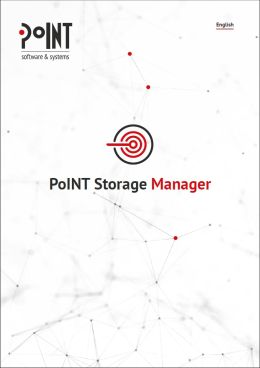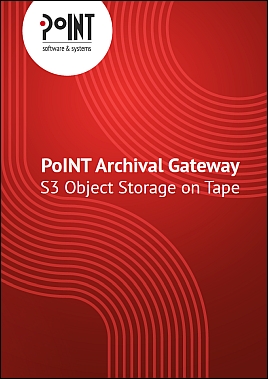
Data is an important resource: it stores valuable knowledge and experience. Archives in particular, but also research institutions and media companies, are confronted with the issue of electronic long-term archiving. After all, data, documents and recordings are stored here for decades.
What are the criteria for long-term preservation? What challenges are involved in designing digital archives?
- Long-term usability of data:
For research data, compliance requirements mandate a 10-year retention period. Archived content is typically stored "forever".
To ensure availability and seamless access, storage should use standardized formats and interfaces. - Media life span:
The lifespan of common storage media is usually shorter than the intended retention period. During the archiving period, data must be migrated to new data carriers.
For long-term archiving, it is recommended to choose the most long-living storage media possible. For example, tape has a lifespan of up to 30 years. - Cost:
When accessing archive data, access performance is usually no longer critical. Data that is not accessed regularly does not need to be stored on high-performance storage systems.
Therefore, when selecting a storage technology for archiving, performance criteria can be put aside in favor of cost considerations.
Long-Term Archiving with PoINT Software Solutions
Research institutions, archives and media companies use our software solutions for long-term storage of unique data and secure archiving of documents.
Case Study: EMBL European Bioinformatics Institute (EMBL-EBI)
The EMBL European Bioinformatics Institute (EMBL-EBI) currently stores approximately 50PB of research data. The data is stored on tape for backup and long-term archiving.
The institute uses our tape-based object storage system PoINT Archival Gateway. PoINT Archival Gateway receives the data via the standardized S3 interface and writes it directly to tape. Thus, the research institute has a high-performance, cost-efficient and scalable solution and is prepared for further data growth.
Case Study: Max Planck Institute Bad Nauheim
The data volume at the Max Planck Institute in Bad Nauheim is in the petabyte range. The majority of the measuring data only needs to be accessed sporadically. Therefore, the institute relies on a multi-tier storage architecture consisting of primary and secondary storage.
Our software PoINT Storage Manager automatically moves data to the secondary storage tier where tape storage systems are used. PoINT Storage Manager offers special functions for secure long-term archiving of this data, while at the same time ensuring that users continue to have seamless and transparent read access to the data.
Case Study: Belgischer Rundfunk (BRF)
The Belgian Broadcasting Center of the German-speaking Community (Belgischer Rundfunk, BRF) has extensive media resources. Older recordings were still stored on tapes and cassettes; they were digitized and stored on hard drives for archiving. However, with increasing volumes of large audio and video data, costs became an issue.
With the help of PoINT Storage Manager, BRF now archives older digitized content on tape in a long-term and cost-effective manner.
"PoINT's software meets all of our requirements, and it was the most cost-effective option. The data is saved in a non-proprietary format and the system is fully transparent for the applications used to access the files. It does exactly what we need while still being easy to use."
– Marc Schiffler, head of production and technology, BRF
PoINT's proven archiving solutions provide the key functions for building digital archives and reliable long-term electronic archiving of important data. With PoINT Storage Manager and PoINT Archival Gateway, companies and institutions can cover different use cases, archive their valuable data securely and meet compliance requirements. At the same time, users can quickly access the archived documents and files. This ensures that the data remains readable and usable for further analysis in the future.
- Optimize your storage infrastructure:
Our software solutions seamlessly integrate different storage classes into your infrastructure and store data on the most appropriate storage media. This allows you to use your storage systems in the most cost- and energy-efficient way. - Long-term archiving:
PoINT solutions offer a sophisticated range of functions to meet compliance requirements for archiving. For example, retention periods can be monitored with the integrated retention management. Optional WORM protection is available to ensure that data cannot be changed. - Standardization:
Data is stored in standardized formats and through standardized interfaces. Adherence to these standards when backing up data is essential to ensure long-term, seamless access to data. - Migration:
When building or optimizing long-term electronic archives, large volumes of data often need to be migrated to new archive storage. Archive migrations may also be necessary during the archiving period due to the limited lifetime of the data carriers. Therefore, PoINT's archiving solutions offer appropriate functions for storage migration. - Hardware and Vendor Independence:
PoINT solutions support a wide range of storage hardware, independent of the manufacturer. This means that existing hardware can continue to be used and there is full flexibility for new investments.
Durable media for long-term archives
Tape is the ideal storage medium for long-term archives:
- Tapes have a lifespan of about 30 years, which covers a long archiving period.
- Data storage on tape and the storage of the media is particularly energy-efficient and resource-saving.
- Tape offers a particularly favorable price per TB.
PoINT's archiving solutions seamlessly integrate tape storage technology into the infrastructure. The storage is manufacturer-independent according to standards, so that files and documents remain readable and usable in the future.

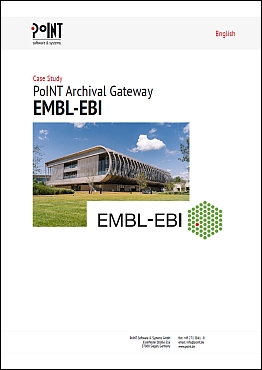
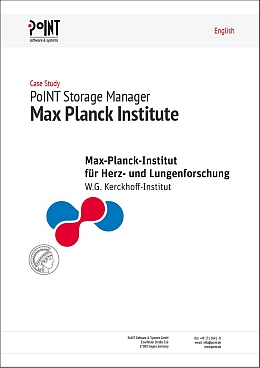
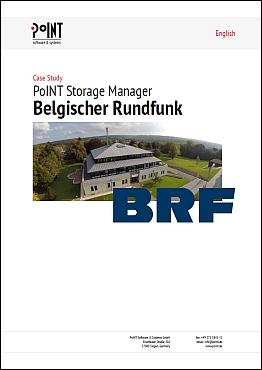
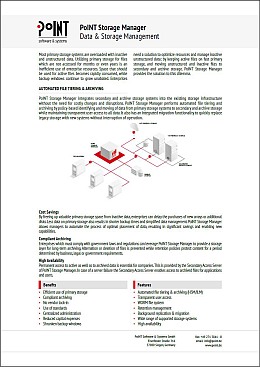
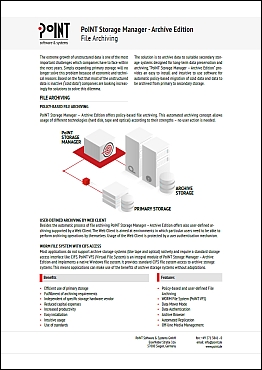

![Case-Study-CEA [Translate to en:] Die Case Study beschreibt wie CEA die Lösung von PoINT einsetzt.](/fileadmin/user_upload/case-studies/cea_fontenau-aux-roses/case-study-psm-cea.jpg)

